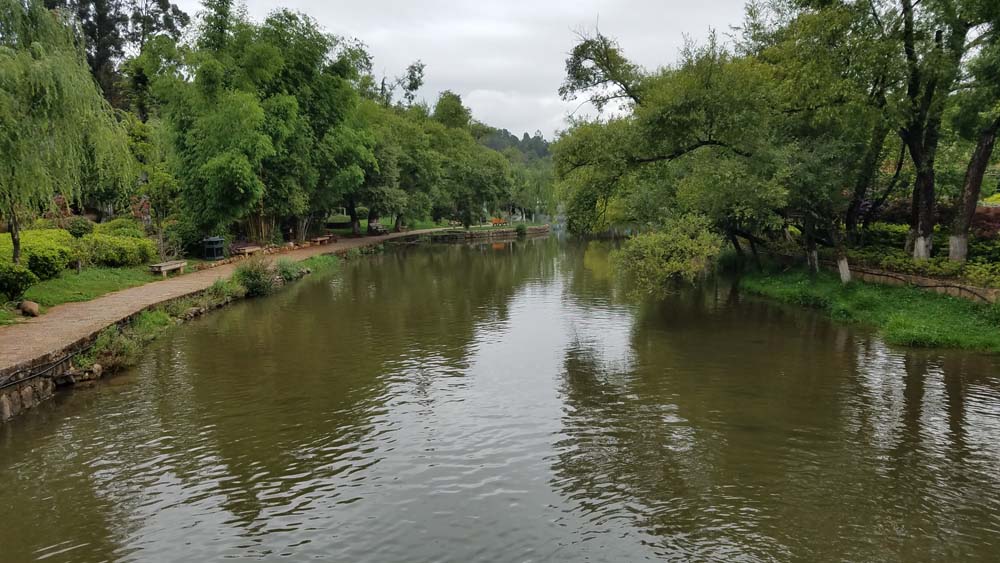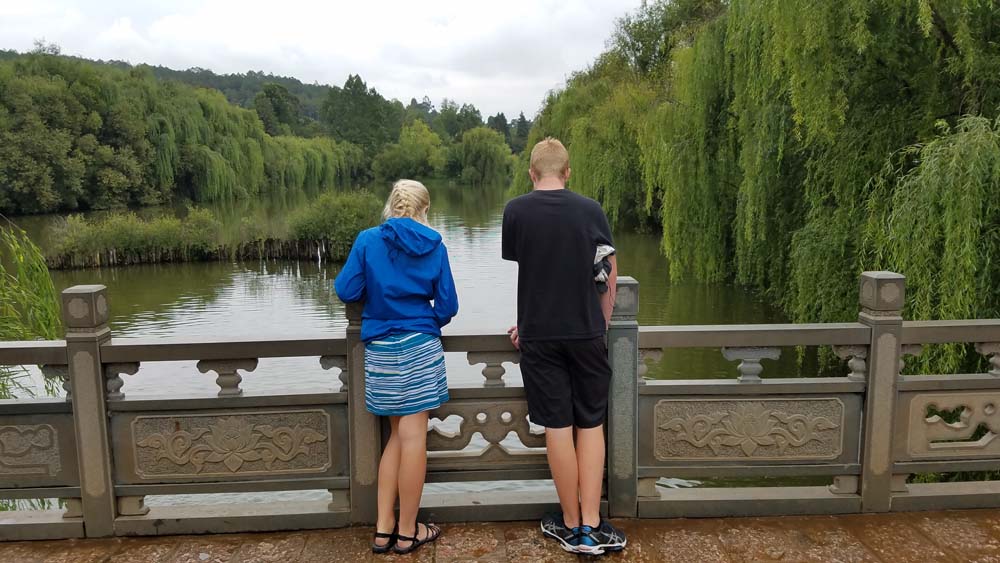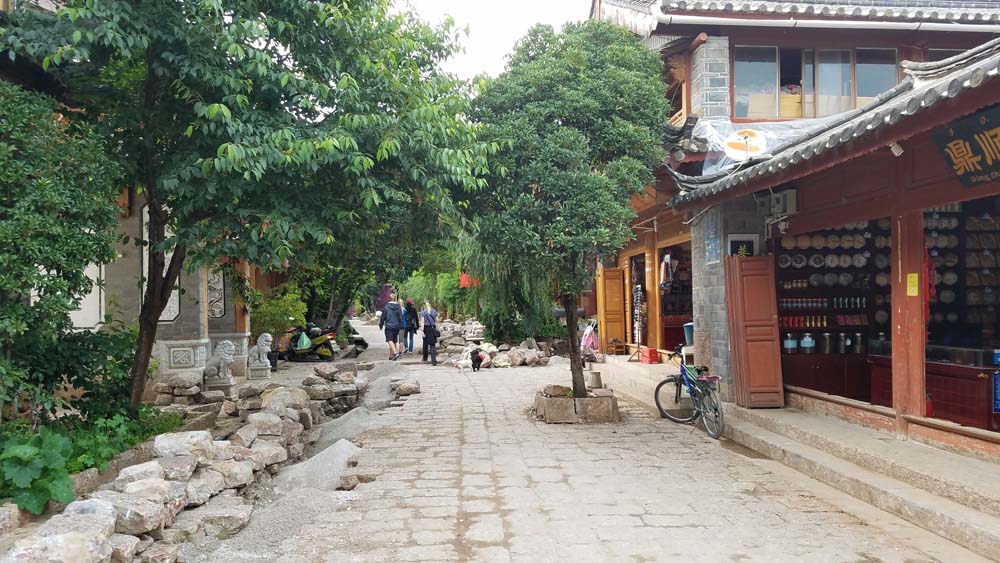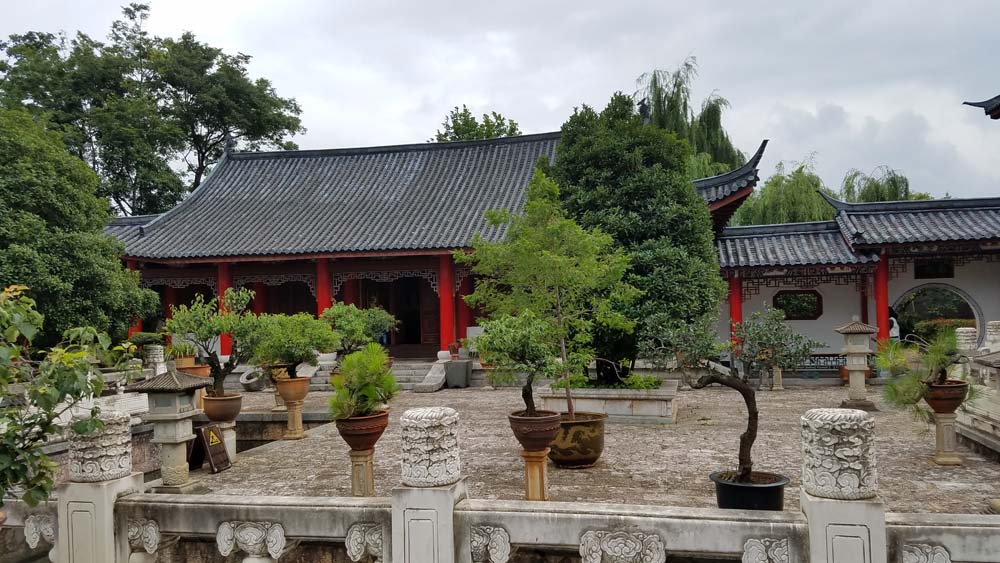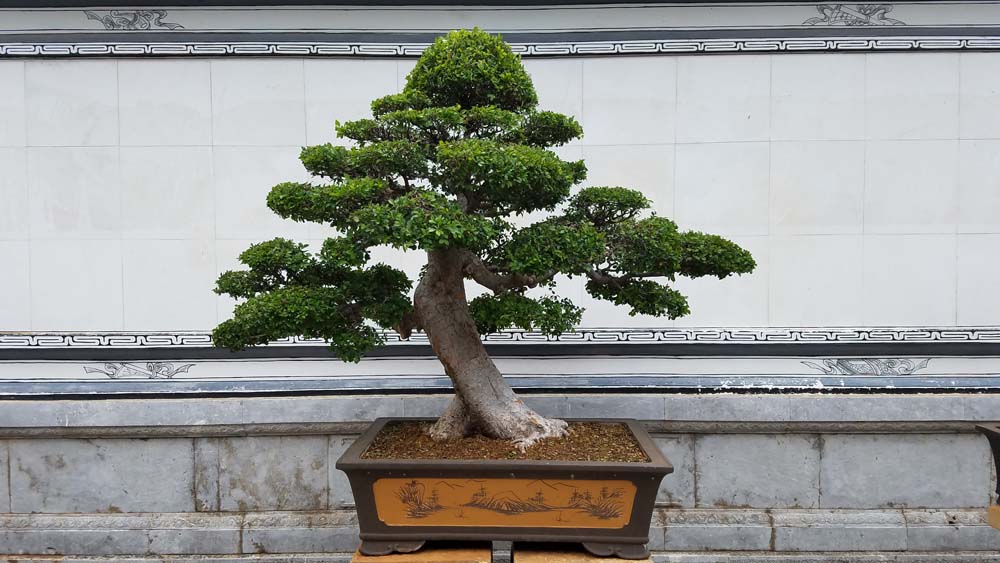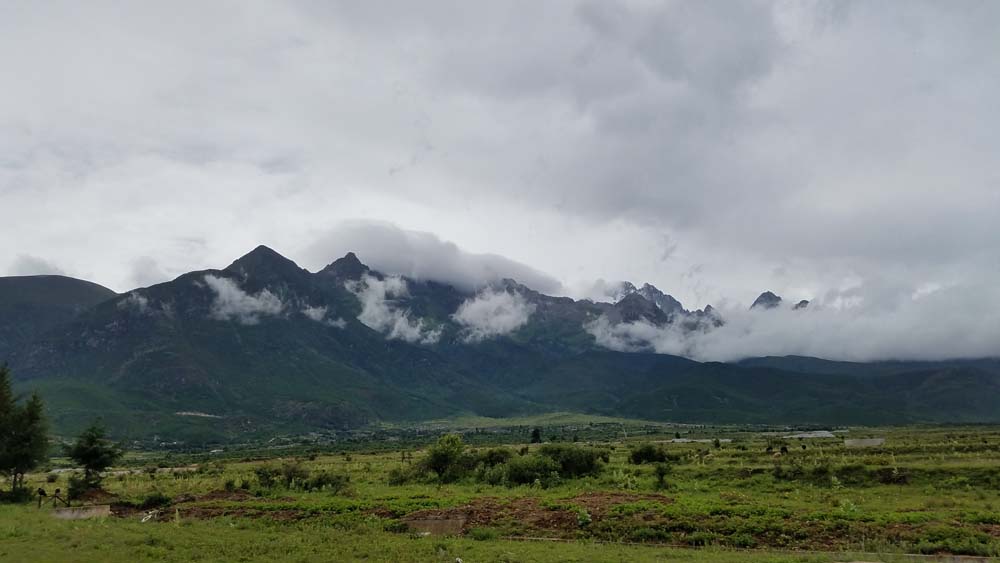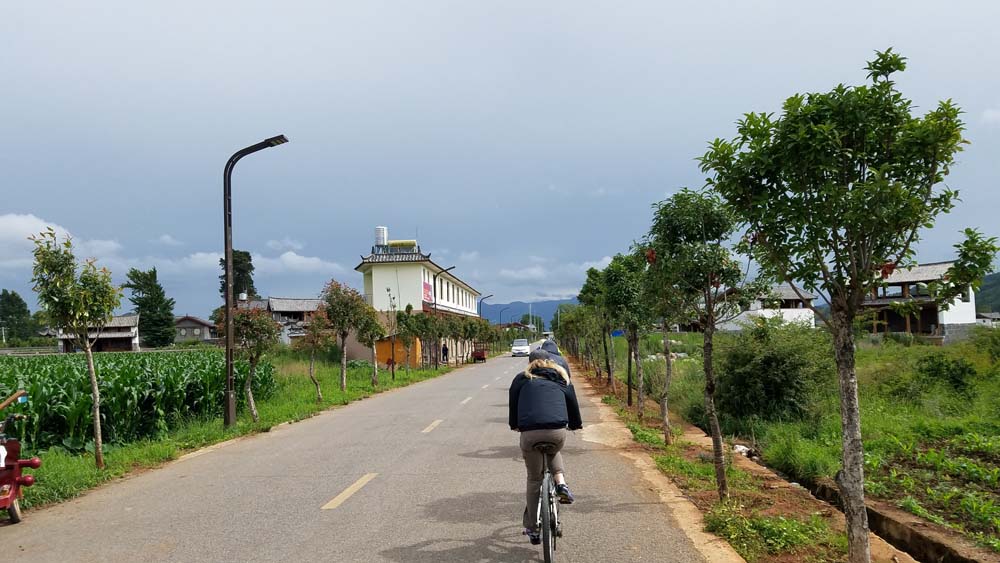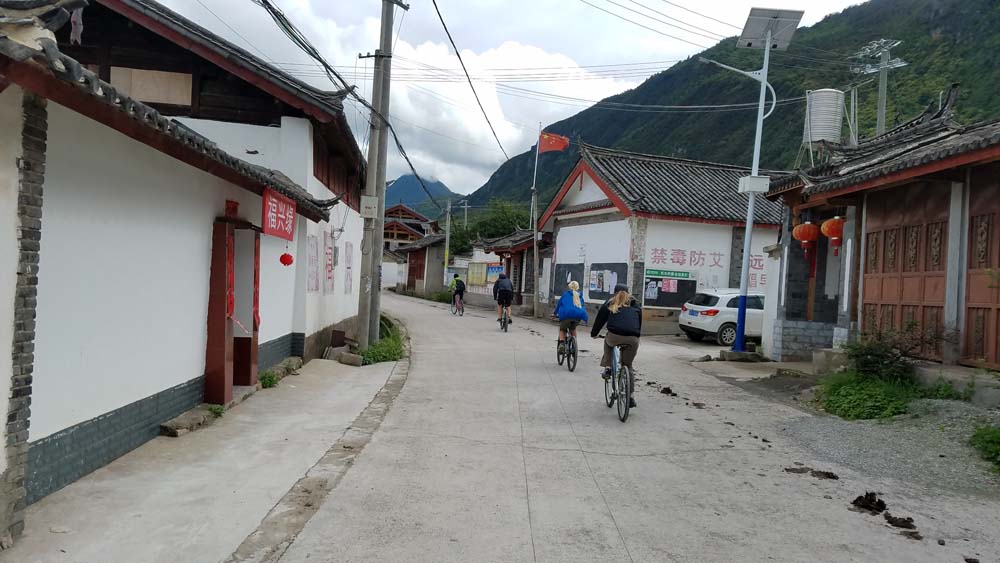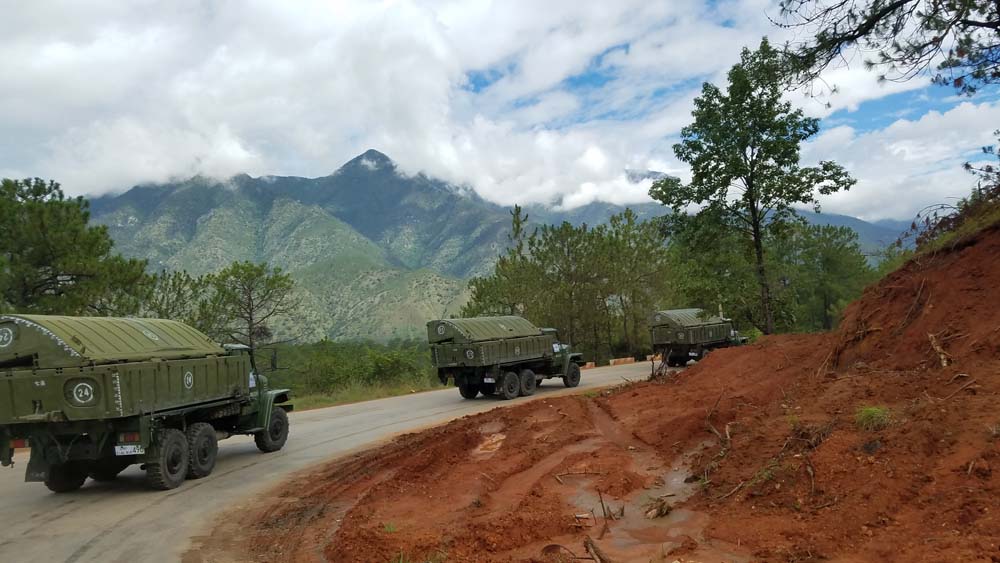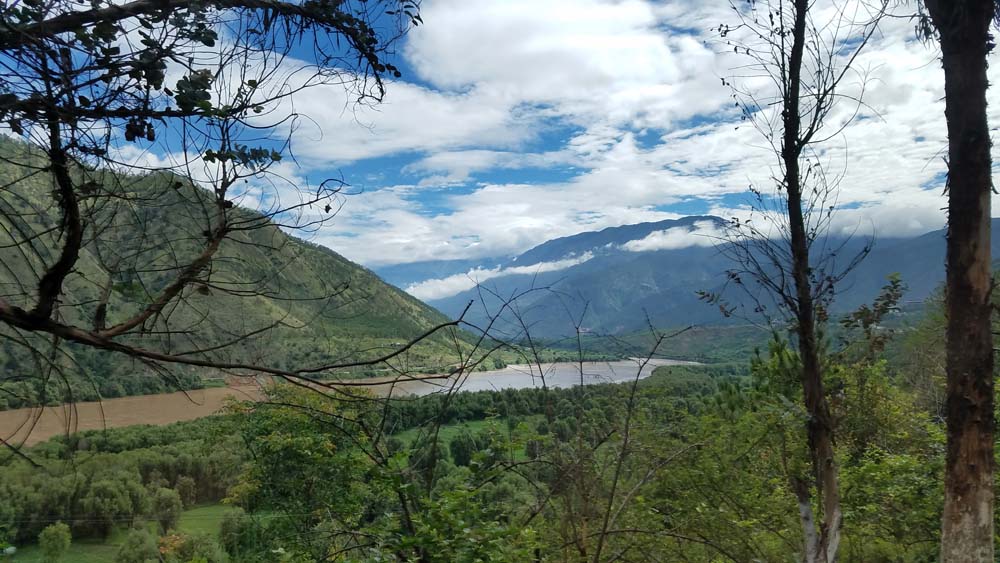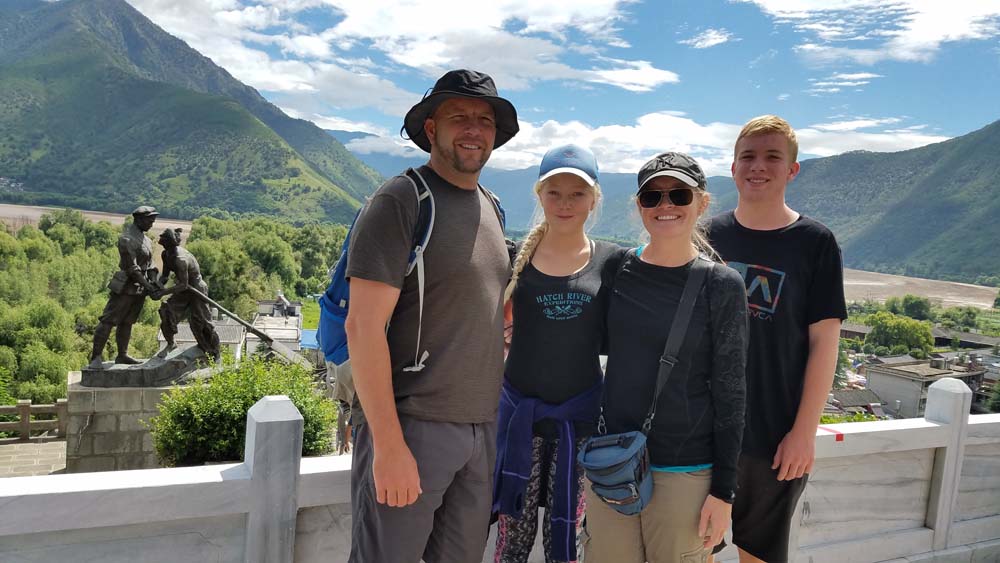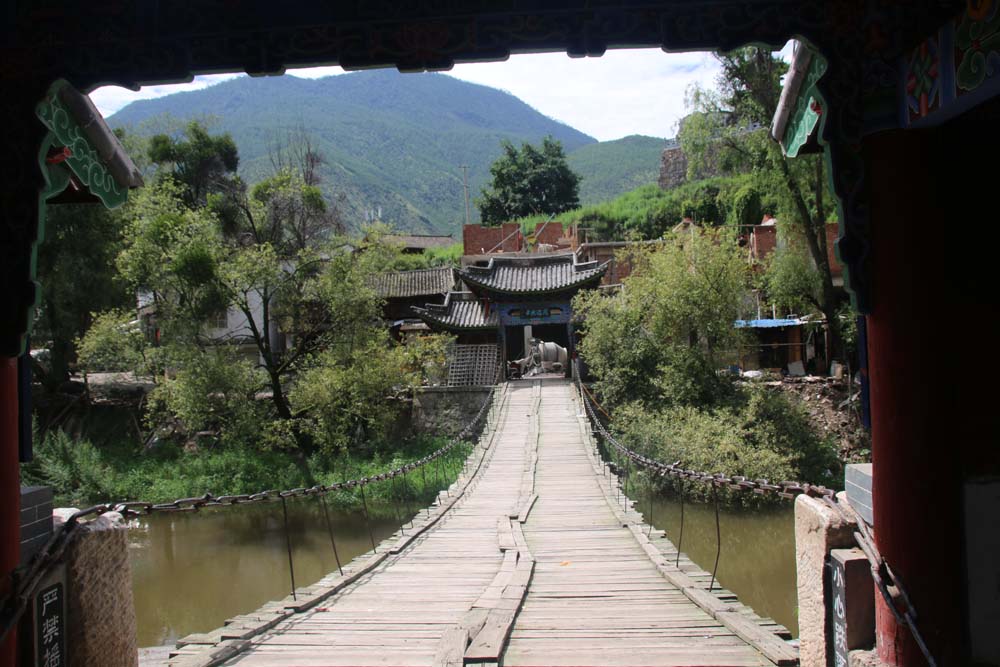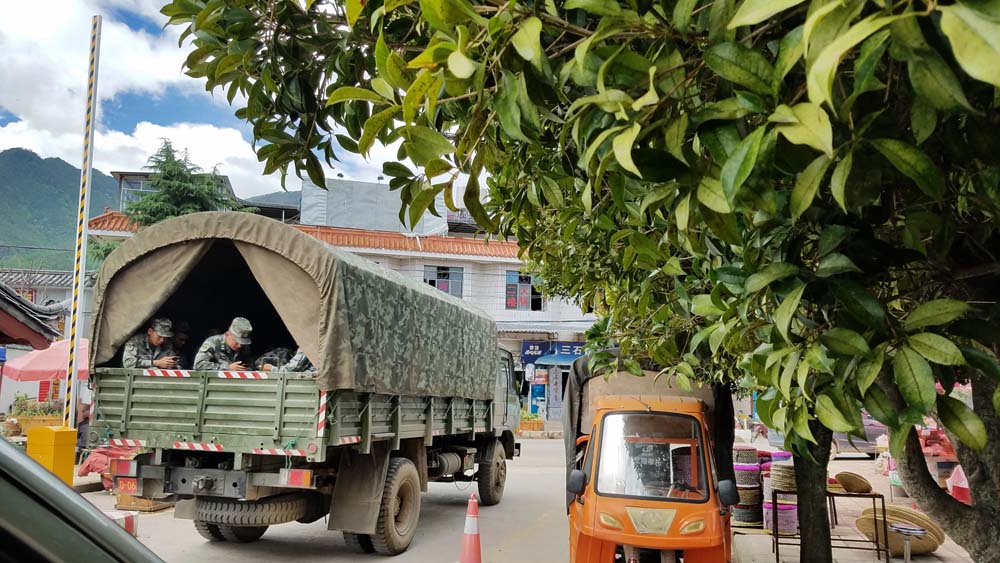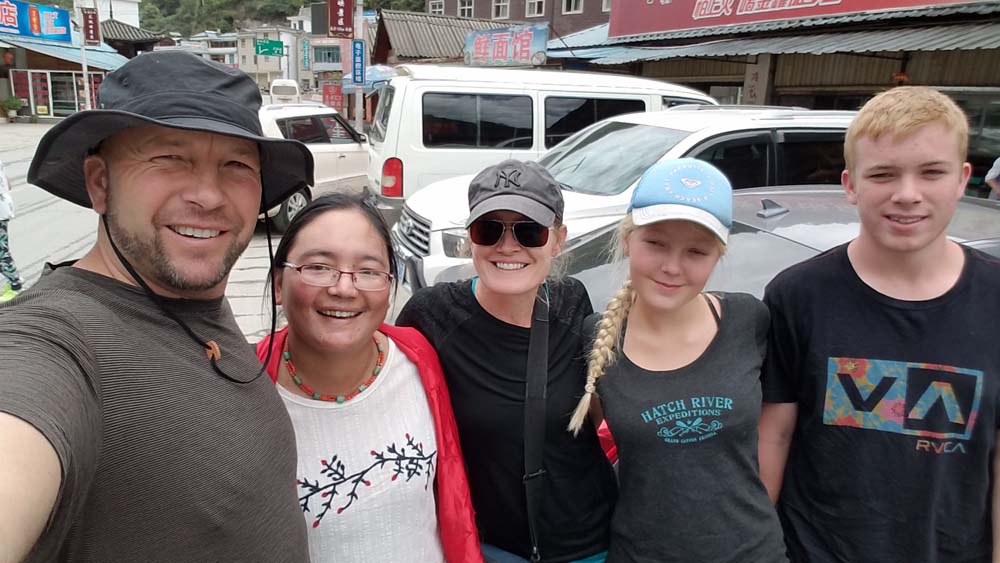 Adventuriety
Adventuriety
This year has taught me that when we disembark on the tarmac it is usually a sign of impending good adventure. This was true in Tanzania, the Galapagos and now Lijiang in China’s Yunnan province. Yunnan is located in southwest China in the eastern part of the Himalayas, sharing a border with Burma, Laos, and Vietnam in the south and Tibet in the northwest. The people here are as diverse as the landscape as more than half of the country’s minority groups reside here.
We flew at the crack of dawn from Xian to Lijiang, our first flight on a domestic Chinese airline and I was more nervous than usual. This was definitely challenge level travel for me and the longest two hour flight I have been on in quite a while, but obviously all was fine and we landed in the mountain city of Lijiang safely. The mountain air was cool and fresh and a welcome change. Our guide met us and introduced herself as Tibetan. This was an interesting twist as China and Tibet have all kinds of issues. As we got better acquainted with Denise (and yes, I have changed all of the guides’ names in my China blogs) we learned a lot about her family and their suffering through the Cultural Revolution and still today.
We drove from the airport to Black Dragon Pool Park. It is a lovely park with weeping willows and a path that meanders around the pond where we saw groups of people exercising together, a common sight in China. The area is surrounded by mountains and on a clear day the reflections in the water are said to be stunning…it was not a clear day, we couldn’t even see the mountains but we enjoyed the walk.
Denise wore a beautiful jade ring that she twisted as we walked around Black Dragon Pool Park. I commented on the uniqueness of it and she told us it had been her grandmother’s ring and had been saved from the Cultural Revolution because her grandmother had buried the family jewelry in the mountains. Both Denise’s mother’s parents were killed in the Cultural Revolution because they were artists, jewelry makers. She said that her mother’s life was very difficult because of the Cultural Revolution.
So, just in case you need a little history refresher, the Cultural Revolution was ten years (1966-1976) of Mao Zedong’s fairly successful quest to reassert his power over Chinese leaders after his disastrous Great Leap Forward. He did this by calling on the nation’s youth to become revolutionaries and purge the country of all “impure” parts of Chinese society represented by capitalist and traditional elements like all educated people, artists, art, religion, historical and cultural sites and the relics and artifacts that went with them.
Let me back up a bit…Mao served as chairman of the People’s Republic of China from 1949 to 1959. Mao wanted a modern China and during his first year as Chairmen he met Stalin in Moscow, and signed the Treaty of Friendship, Alliance and Mutual Assistance which was a loan to China for money and technical assistance to modernize and industrialize China. With the loan and a little help from his “friends,” Mao began the First Five Year Plan (1953-1957) to boost industry and catch up with the rest of the world. The plan was fairly successful, but the relationship with Stalin had gone bad and so Mao was determined to pay back the loans early and at the same time become a world power (Remember the old man we met from Ping Yao and the worst years in his life? Ping Yao). He planned to accomplish this with The Great Leap Forward (1958-1960) using man power alone to quickly modernize and industrialize the country. Mao took his country of farmers and prohibited farm ownership or any private farming and put everyone to work making steel in backyard furnaces. Farming was organized into communes and people ate in communal kitchens. The government set unrealistic farm quotas (to feed China and pay back Russia), communes over-reported their production to meet quotas while droughts, floods and newly implemented and faulty farming techniques added to the problem. The number of famine victims is estimated to be between 20 and 43 million. The Chinese government called the famine Three Years of Natural Disasters but truly it was disaster at the hands of Mao. Mao faded into the background for a few years. Now it’s 1966 and Mao is ready to reestablish his power and so begins the Cultural Revolution.
We stayed in the Old Town of Lijiang, a UNESCO World Heritage Site dating back to the 13th century when the Mongol armies of Kublai Khan moved southward through the Yunnan province in an attempt to control all of China.
The Old Town is charming and fun to wander the colorful labyrinth of cobbled alleys.
There are many canals (seen in a lot of these pictures) in Old Town that have been used for years. This double water wheel is in the town center and still functions as part of the old water ways.
There are all kinds of shops and restaurants in Old Town and you have to purchase special tickets to wander the alleys and be prepared to show them over and over.
A minority group that the area is known for dances in the center of town.
We passed a stand selling this peculiar specimen. Denise explained that it is durian, better known as the “stinky fruit from China.” Denise loves durian and told us that when she isn’t eating it, she craves it. It became a problem because she married a man that couldn’t stand the smell of it and he forbade it in the house. Three years passed and then one day she opened the refrigerator and there was her favorite fruit and a heartfelt apology from her husband. Now, he surprises her with the odorous delicacy frequently and lovingly.
I really liked Denise. She was authentic, passionate and she loved her husband. I know that sounds a bit strange, but it was a quality that I admired and I think it’s rare to meet someone who has been married for seven years, has a young child and is absolutely in love and not blindly. Denise’s husband is Tibetan as well, but unlike Denise who is of Tibetan decent (as are many people in the area), he was born in Tibet and his family is still there. They have an adorable four year old daughter and focus on keeping their Tibetan culture alive in a country where Tibetans face strong prejudices. Denise told us how worried she is for her daughter to go to school and be told that Tibetans are bad people, a belief still strongly promoted by the Han Chinese, the largest ethnic group in China. The borders of Tibet have changed over China’s long history, but today there is the Tibet Autonomous Region (TAR) which occupies one eighth of the China’s territory. It is very difficult for anyone other than Chinese citizens to travel to Tibet and especially for Denise and her husband to travel there because he is not a Chinese citizen and she is and so there are always questions and permits. One blogger wrote that it is harder for a Tibetan to get a passport than to get into heaven.
She told us a story of a tour group leader in Beijing that had written a blog on WeChat. And before I continue, what exactly is WeChat? This is important because all of China is plugged into it and every one of our tour guides wanted us to get on WeChat to keep in touch, but Scott refused. WeChat is China’s answer to Facebook and texting all rolled into one and it is heavily monitored, real time, by the government. Every character typed is screened and accounts that carry anti-government writing are erased and blocked. Anyway, back to the tour guide who was assigned to lead a group of Tibetan people. He wrote that he had been told all of his life how horribly rude and mean Tibetans were and then he was assigned this group and had no choice but to interact with savage animals, basically. This was how he felt at first and the reason he wrote the blog because he said he had never been more wrong or surprised.
His group showed up and he took them to the five star hotel that had been booked. The hotel management, upon realizing that Tibetans were checking into their hotel, refused service resulting in hours more of travel to another hotel far outside the city that would agree to hosting Tibetans. Eventually, hours after the ordeal began the original hotel agreed to honor the reservation and more travel ensued. The travelers never complained, never asked for compensation, only thanked the leader for working things out. As the tour continued over long and hot days the leader noticed that these crazy Tibetans were always kind, polite and grateful. There were mobility challenged people in the group and the sprier happily slowed their pace explaining to the leader that it was important to respect the less mobile and include them in the group. The tour leader wrote that he felt so bad for judging these people so harshly that he had to write about it on WeChat. Denise said it was a huge deal for this Han Chinese tour guide to publicly acknowledge that Tibetan people are good.
All of our guides so far have been college educated but Denise was educated at a different level. I think because she is just at a different level of consciousness, possibly from her family’s suffering during the Cultural Revolution and as Tibetans, but she knew all about the Cultural Revolution and is up on current events as she has access to computers with VPNs, and open to discussing anything, especially the controversial topics, which made Scott happy. She is the youngest in a large family of farmers living in a remote area in the Yunnan province. She was ill as a child and so her parents felt the only way for her to have a future was to go to school and so they sent her away to boarding school, the only child of five to get an education. She did well in school and eventually her parents sold all of their cattle to pay for college, where she studied to be a teacher. She worked and continued to go to college for her tourism degree, all the while learning English. Now she works only with English speaking clients because she says her views would get her into trouble with Chinese clients. She is also the liaison between her family and the modern Han Chinese world as they speak only their Tibetan dialect and still live in a Tibetan village a few hours from Lijiang.
Our Old Town tour continued as we wound through the alleys of old town and climbed up stairways to get a view of the city and visit the Wang Gu Lou Pagoda on Lion Mountain.
Wang Gu Lou Pagoda
Inside the pagoda we found this helpful sign on the stairwell and outside this stunning pattern of tiny rocks in the courtyard leading up to the entrance.
A view of Lijiang and Mu’s Family Palace from the Wang Gu Lou Pagoda.
The Mu Family ruled the Naxi during the Yuan (1271-1368), Ming (1368-1644), and Qing (1644-1911) Dynasties and the Palace was the center of government, wealth and power.
Of course the palace is only a replica, destroyed during the Qing Dynasty and rebuilt from 1996-1999. It was lovely but the best part was the Bonsai trees. Scott had looked for Bonsai trees in Japan and here they were, many of different varieties and impressive. I learned that Japanese Bonsai actually originated from the Chinese tradition of Penjing, or tray scenery.
We visited the Bai Sha Village, the formal capital of the Naxi kingdom. This mural at the entrance of the Dabaoji Palace shows Dongba symbols, the written language of the Naxi.
Dongba symbols continue to be used by the elders of the Naxi people, making it the only hieroglyphic language still used in the world today.
In the Bai Sha Village there are many ancient buildings from the Ming Dynasty, including Dabaoji Palace, the birthplace of Tusi, chief of the Mu clan (remember the Mu Family Palace?).
The Baisha Frescoes are located in Dabaoji Palace, rare surviving frescoes from the Ming dynasty. Denise told us that the Naxi people cunningly covered the frescoes with paintings of Mao during the Cultural Revolution and then invited the Red Guard to come and see what zealous supporters of Mao this village boasted. The frescoes, representing a mix of Tibetan Buddhism and Daoism, along with the many cultural influences of the area, were safely hidden.
We walked through a few other villages near Lijiang, this is a 500 year old bridge in Longquan Village. There are many shops that were once occupied by minority people like the Naxi but have now been taken over by Han Chinese.
Some good signs
Farmers worked plots along the main streets of the town…
Although I’m not convinced that all of this came from the gardens along the paths, it was being sold in proximity and looked tasty.
We walked down some less touristy streets. In made me sad to see monkeys in those cages.
Our next stop which turned out to be our favorite experience in Lijiang was a Naxi family-owned embroidery shop. Scott wanted to purchase an authentic textile of some sort from the area and asked Denise to take us somewhere that we might do that. The woman above is the best in the family. We watched her for a while and then looked at the other projects in progress.
Ashley stopped to admire this piece and was invited to sit down and try it. It is all silk thread and incredibly fine. It takes the women years to learn and still large pieces can take months to complete.
This is where we left her, happily working away. I think she would have stayed all day, but we only had an hour and so we wandered around the property, enjoyed tea in their peaceful courtyard, looked at every piece of work on display and finally, when we couldn’t wait longer because we were already very late for a performance, drug her away…
…but not before she had made some new, kind and very talented friends. Denise felt the worst for taking her away and the ladies seemed sad to see their new and passionate student leave.
And what about that textile Scott wanted to purchase? We weren’t planning on such an elaborate piece, but we were able to buy the piece that Ashley was working on.
We sadly hurried away from the embroidery shop to catch most of this performance called Impression Lijiang, a singing and dancing performance demonstrating the tradition and lifestyle of the local ethnic people.
It is another creation of famous Chinese director and producer, Zhang Yimou, the same guy that orchestrated the 2008 Beijing Olympics Opening Ceremony. It is performed in a stunning outdoor theater at 10,100 feet above sea level with Jade Snow Mountain as the breathtaking backdrop. It was all very impressive but the two most memorable parts, besides the mountains were…
The most enthusiastic actor/dancer I think I have ever witnessed and his audience counterpart who could not stop moving either.
We left the performance for our last stop of the day, Yuhu village and Dr. Rock’s house. We were met in the village parking lot by a stooped old woman selling flower crowns. Scott dug in his pocket to pay for one and all of the sudden all the sweet little old village women were selling him flowers. He patiently purchased a flower crown from each woman and then we posed for Denise since she thought he was especially kind for supporting the locals and we looked especially funny with our flower attire which she wanted to share with her friends on WeChat. It got even better when Scott started buying flower crowns for tourists who had turned the little old women down. Always the lady’s man…
Yulu Village is a small Naxi farming village where the explorer, botanist and linguist Dr. Joseph Rock lived from 1921-1949 researching and writing for the National Geographic Society.
We walked through the village and to Dr. Rock’s house where a man was smoking a cigarette in the courtyard and waiting to unlock the “museum,” a room full of dusty and probably historically very important photos.
We were allowed to climb up into Dr. Rock’s room in another building but “no photos” there for no apparent reason. There was certainly no attempt being made at conservation. The picture on the left is the view of Dr. Rock’s courtyard from his bedroom window. The little pond is spring fed and the source of water at the house.
We stopped for a few more pictures in front of Jade Dragon Snow Mountain…
…such beautiful countryside and so different from the China of our first week.
Although Denise was absolutely proud of her Tibetan heritage, she was Chinese in her outspokenness for sure and made us laugh the whole two days we were with her. She openly admired Jewish people for their outspokenness and their intelligence (she said they never got lost in the labyrinth of Old Town) and she continually said we were too thin to be Americans. According to her, we were more like the Dutch and that was fine because the Chinese like the Dutch, but Denise told us that in the villages around Lijiang, we were definitely Americans because the villagers remembered the Flying Tigers Brigade and really like Americans. This feeling of goodwill carries over from before World War II when the Flying Tigers Brigade, a clandestine airborne operation was approved by Frederick Roosevelt to defend the Chinese from the Japanese and used an airport near Lijiang. After Pearl Harbor the group was no longer secret and the airplanes painted with the shark faces (that the Chinese thought looked liked Tigers) were celebrated for their success again the Japanese.
Denise arranged for us to take a long bike ride with a local guide through the outskirts of Lijiang. We managed almost two hours along the perimeter of the city and through smaller neighborhoods but abandoned the bikes when the traffic became too chaotic. Bikes are always a nice, if not challenging way, to see the real parts of a place a little bit closer up and the bike ride reminded us of our bike tour in the Sacred Valley of Peru (You’ll Look Sweet…) That was it for Lijiang but not for our time with Denise. She would ride with us to Tiger Leaping Gorge to meet our next guide.
We left Lijiang the next morning and our 2.5 hour drive was slowed considerably by military vehicles in front of us, behind us and passing us. Denise and the driver spoke quietly in the front of the van. She explained to us the the trucks were heading towards Shangri-La and Tibet and they were concerned something was happening in Tibet. There were soldiers standing at attention and saluting the trucks as we drove along the roads and through toll booths. I had been a little bit uneasy for most of our trip but the rows of military trucks stretching out of sight felt ominous. Scott used his phone to research the types of trucks and realized that they were carrying pieces of a temporary pontoon bridge. This made sense since heavy rains had washed out a bridge in the area. It was a relief to know that the mission was benign, but still a reminder that we were in a very different place.
The scenery was stunning. This is the Yangtze River, called Jin Sha Jiang (Golden Sands River) in Yunnan, as we descended into the valley on our way to the village of Shigu.
The village of Shigu or Stone Drum Town is located near the first bend in the Yangtze River and is a very popular stopping point on the way to Tiger Leaping Gorge.
We wandered through the village market on our way to climb up through the town to view the some of the memorials to different moments in history.
We crossed in front of the military trucks continuing along the road in front of us…
..and climbed an alley of stairs.
This is the actual stone drum commemorating a battle in 1548 between invaders from Tibet and the joint forces of the Naxi minority and Han Chinese. The stone drum condemns war and promotes peace.
The memorial behind us honors the Long March (1934-1936) and specifically the 20,000 Chinese communist fighters who were assisted by locals in crossing the Yangtze River to escape Chiang Kai Shek’s army. You can also see the first bend in the Yangtze River where the river makes a 90 degree turn from south to east within a distance of 1 kilometer. 
This is part of the Long March memorial and a great place to view the Yangtze and town below.
We visited the Iron Rainbow Bridge or Tiehong Bridge, an iron chain suspension bridge built during the Qing dynasty and part of the Southern Silk Road. Looks pretty cool right?
This is a picture of the bridge crossing it on the way back towards the town…
…and the other side. Not a popular tourist attraction, it was interesting for that very reason. A beautiful antique, buried under a garage full of dusty junk, contrasting sharply to the very shiny replicas of the past that we were becoming accustomed to in China.
The First Bend of the Yangtze River (it is actually capitalized like a title).
We passed more soldiers on our way out of town.
On our way to Shangri-La…the thought that we could be in Tibet in a few hours was crazy.
Good-bye to our funny and fantastic guide Denise and onto our next adventure in Shangri-La!



